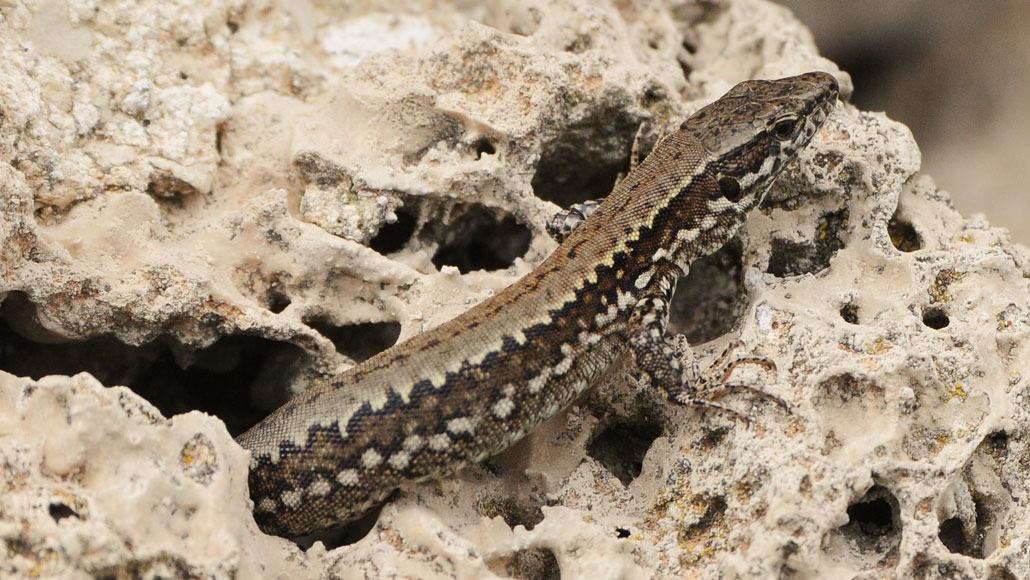A new lizard parasite is the first known to move from mom to baby
The worm turns up in the mom’s ovaries and the embryo’s braincase of a common wall lizard

A common wall lizard (Podarcis muralis), like this one captured in the wild, can harbor parasites that move across generations, from mother to baby lizards, researchers have found.
N. Feiner/Lund University
For Nathalie Feiner, it was just another day in the lab. As part of her work on understanding how the common wall lizard is adapting to a changing climate, the evolutionary biologist was observing one of its eggs under a microscope when she caught a strange sight. “Something was moving in there,” says Feiner, who was at the University of Oxford at the time.
Inadvertently, she had found a parasitic worm that can move from a mother lizard to her embryos, Feiner, now at the University of Lund in Sweden, and her colleagues report in a study in press in the May 2020 issue of The American Naturalist.
Parasites moving across generations have been well-documented in mammals. But this is the first evidence of such transmission in any egg-laying amniote, a group that includes birds and reptiles, says Daniel Noble, an evolutionary ecologist at the Australian National University in Canberra. The study “establishes some critical natural history, and opens up a whole new set of exciting questions,” says Noble, who wasn’t involved in the study.
Feiner’s team collected and dissected hundreds of eggs from 85 female wall lizards captured from six different places in Italy, France and England. Of those, the parasitic worms showed up only in eggs of some lizards from the French Pyrenees. Mothers of infected embryos also carried the parasitic nematodes, the team found. But while nematodes typically reside in the gut and rectum of their hosts, these were found in the ovaries of the lizard (Podarcis muralis). As many as 16 nematodes were found freely swimming between the follicles. That proximity to developing eggs may make it possible for these worms to infect the embryos, the researchers say.
In birds, crocodiles, turtles and other reptiles, the hard, calcified eggshell starts to form inside the mother when the embryo is very young. In lizards and some snakes, though, the process begins only after a particular stage of the embryo brain development is complete. This delay in forming an eggshell might be just the window that these worms exploit to gain entry and set up residence in an embryo’s brain.
It’s unclear how the worms migrate from mom to embryo, but hiding in the braincase allows them to escape the embryo’s immune system. The worm then stays put until the egg hatches. The parasite does not appear to damage the baby lizard.
“It’s really possible that they have just coevolved so that the nematodes can survive and cope in the head, and the lizard doesn’t mind. So they just can happily exist,” says Feiner.
Sign up for our newsletter
We summarize the week's scientific breakthroughs every Thursday.
A genetic analysis suggests that this parasitic worm is a close relative of Spauligodon, a gut-dwelling genus of parasite also found in these Pyrenees lizards (SN: 3/18/08). For a nematode that lives in the gut, “it might not be a very big evolutionary step” to move to the ovaries, says Feiner.
Further research will help answer questions about how and when these worms evolved, impacts on their lizard hosts and whether or not the mom-to-egg transmission is unique to this population. This parasitic lifestyle might be much more common than thought, Feiner says, “it’s just that there are not many people who look into the brains of embryos.”






